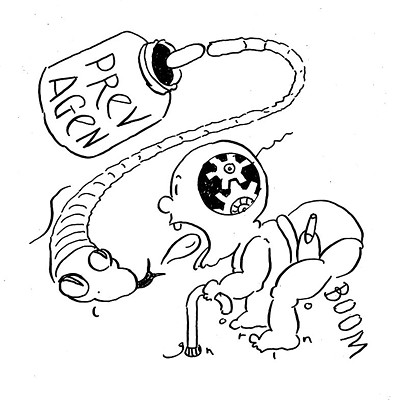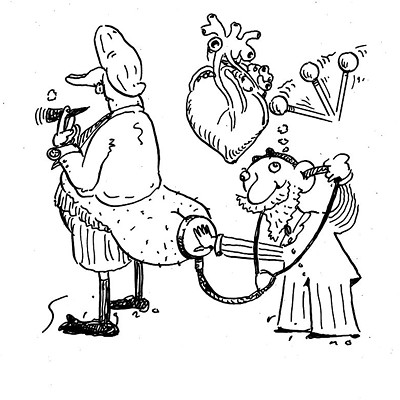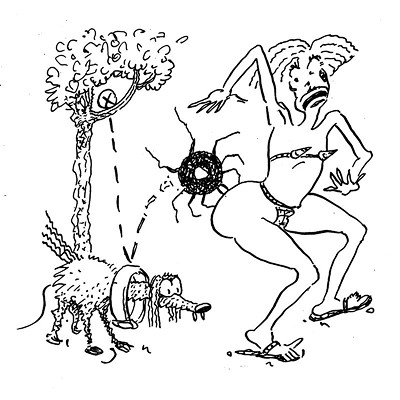Years ago I made the mistake of reading a book called The Journeyer by Gary Jennings, about the life and adventures of Marco Polo. If you're not familiar with Jennings's work, the synopsis is simple: SEX, VIOLENCE, history, SEX, VIOLENCE. Jennings writes of a torture practiced in the Orient of Polo's time called "death by a thousand cuts." Supposedly the grand poobah torturer would fill a container with a thousand pieces of paper on which were written the names of body parts. He would then pick out one slip after another and cut, maim, or burn the assigned body part, keeping the victim alive until all one thousand were used up. I'd forgotten about this until I heard the phrase in conversation recently. Was this really a torture practiced anywhere at any time? -- Beer-is-Yummy, via the Straight Dope Message Board
Before this question can be answered, we need to scrape back certain dubious encrustations:
1. "Death by a thousand cuts" is strictly a Western expression-the Chinese term is lingchi, the origin and literal meaning of which is obscure. Three dozen cuts is more like it, although I've seen one account claiming especially iniquitous individuals wound up in 120 pieces, which I guess might require up to 119 cuts.
2. Other than in Jennings, I've never heard anything about a body-part job jar.
Those caveats having been offered, yes, death by numerous cuts was an accepted method of execution in China until 1905. The idea was to hack the condemned to pieces in public. But here's the bit that slays me, so to speak: Western sniffs thought this was inhumane.
The story is told in a fascinating 2008 book, Death by a Thousand Cuts, by Timothy Brook et al. Lingchi was a punishment reserved for infamous crimes such as treason or parricide. The primary goal wasn't prolonging the agony. Often the victim was drugged with opium; typically the executioner administered the coup de grace, a stab to the heart, soon after starting his work.
Instead, the point was to make an example of the poor bastard. It's said the Chinese had a special horror of death by dismemberment, since it meant you'd show up mutilated in the afterlife. The condemned was trotted out into the marketplace and methodically butchered. The breasts were sliced off, and hunks of flesh were gouged out of the arms and thighs. After that the limbs were severed, and finally the head. The whole thing was over in maybe five minutes. Lesson for the assembled masses: don't be bad.
Though reports of painful Chinese punishments had long circulated in the West, lingchi didn't become notorious outside China until the publication of drawings and eventually photographs of lingchi in progress in the 19th and early 20th centuries. The grisly images confirmed outsiders' belief in China's exceptional cruelty, justifying Western exploitation.
Which is pretty nervy when you think about it. Lingchi isn't far removed from drawing and quartering (nonfatal hanging, then castrating and disemboweling the condemned while still alive, then beheading followed by hacking or tearing the body into four pieces), which was the statutory punishment for men convicted of treason in England until 1867.
The garrote (strangulation by tightening a metal band around the neck, sometimes also involving a sharpened screw that pierced the spine) was the prescribed method of execution in Spain until 1973; U.S. authorities used it in the Philippines until 1902. The Chinese were appalled by the British practice of brutally flogging soldiers and sailors for minor offenses.
Criminals were publicly hanged in the UK until 1868, in the U.S. until 1936. In "short drop" hanging, the standard method until the mid-19th century, the condemned typically took 10 to 20 minutes to die of strangulation.
Most of this is ancient history, though. China has now achieved global parity in the corrective methods department. True, it still puts people to death, a practice abolished in most countries. But it has plenty of company among the great, or anyway most populous, nations of the earth, including India, Indonesia, and of course the non-criminal-coddling U.S.
























